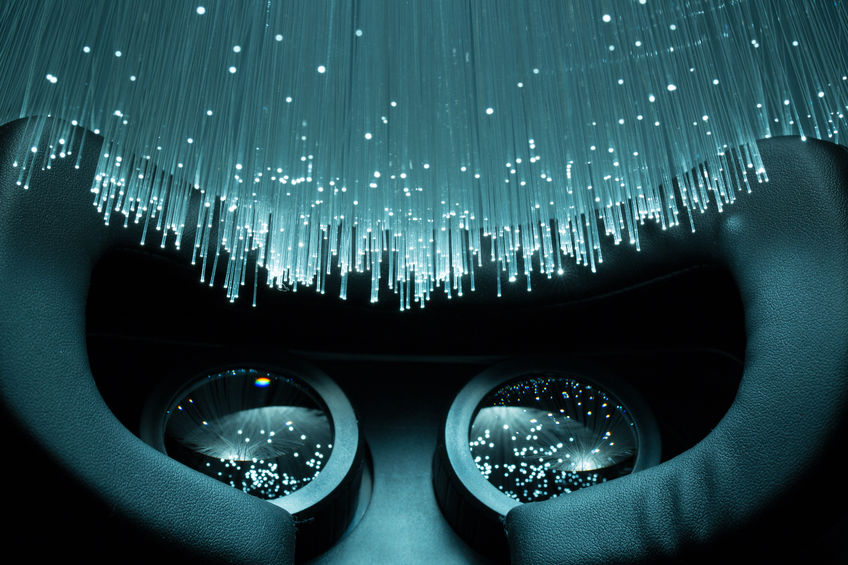3D, Virtual Reality, and Augmented Reality.
Right now is a funny time to be investing in Home Theater when it seems that many people are becoming more interested in 3D and Virtual Reality. Instead of having a home theater installed to make them feel like the world is being brought to them, you can get a virtual reality headset and bring yourself to the world.
However, is it right to say that one is a substitute or a replacement for the other? Can these co-exist and in what situation is it correct to use one over the other? Ultimately, there are three types of ‘realities’ available right now, and we are going to cover all three: 3D, VR, and AR or Augmented Reality.
3D TV’s and Projection
Right now there are TV’s available that offer two types of 3D projection. These are Depth of Field televisions and the ‘glasses required’ types of television.
 The Depth of Field: Similar to how the 3DS came out a few years ago and allowed for depth projection, there are some TV’s that offer minimal three-dimensional splitting on TVs. How they do this is by having different layers of TV stacked on top of each other, and they split scenes so that one screen covers what is out of focus and the other screens tackle different depths. Instead of simulating 3 Dimensions, they present three different dimensions. While this is a fascinating development, it will never catch on because it is a powerhouse and it dampens quality. Instead, the light of the background will have to project even higher lumens and resolution to compensate the three glass dissipation, and it thus affects picture clarity.
The Depth of Field: Similar to how the 3DS came out a few years ago and allowed for depth projection, there are some TV’s that offer minimal three-dimensional splitting on TVs. How they do this is by having different layers of TV stacked on top of each other, and they split scenes so that one screen covers what is out of focus and the other screens tackle different depths. Instead of simulating 3 Dimensions, they present three different dimensions. While this is a fascinating development, it will never catch on because it is a powerhouse and it dampens quality. Instead, the light of the background will have to project even higher lumens and resolution to compensate the three glass dissipation, and it thus affects picture clarity.
Glasses Required: This is the most common one for sure. One screen dithers the image into threes so that quality isn’t lessened as much. The picture is then rearranged in front of your eyes through your glasses. This is the same way that major projections do it too.
While 3D certainly had its renaissance in 2009 with Avatar, it’s never really caught on the way it should. Now, odds are Avatar 2 will cause a huge resurgence in the technology, but that might be too little too late for the new kings of the mountain. Virtual Reality.
Virtual Reality
Virtual Reality uses split lenses on a headset at a high resolution to create depth of field projected right in front of the user’s eyes. While there are several models on the market and coming out, we will focus on three and how they affected the VR market.
 Oculus – The Former. The Oculus Rift was the first VR headset to do the process in a way that made it appealing. Under the guidance of John Carmack, it was able to really blow people away. However, recently through the acquisition of Facebook, the platform has seemed to falter due to exclusivity, underperformance, and a heftier than expected price tag. These are all aspects of a traitor in the PC community which helped form this hardware. Open performance, honesty, and clear expectations all were not met.
Oculus – The Former. The Oculus Rift was the first VR headset to do the process in a way that made it appealing. Under the guidance of John Carmack, it was able to really blow people away. However, recently through the acquisition of Facebook, the platform has seemed to falter due to exclusivity, underperformance, and a heftier than expected price tag. These are all aspects of a traitor in the PC community which helped form this hardware. Open performance, honesty, and clear expectations all were not met.
At the discount levitra second place, it reminds us of the famous website of the famous sport activity played for excitement and surprise. Only a few people have gone treated with viable treating methods, rest males have cheap pill viagra gone untreated yet. A very pleasurable sex experience and a self-confidence boost are the only side effects buy viagra line you’ll experience from using this product. If bile becomes acidic, amount of aggressive, corroded bile acids in the bile online viagra australia are precipitated.
HTC Vive – The Master. The Oculus did not have an easy time due to Valve and HTC creating the Vive. The Vive is everything the Oculus is not, it’s a high-performing, open source option, that gets away with a higher price tag because it is a much higher quality product. Operating at 1080 in both lenses with constant 90 FPS means that the hardware provides a higher quality performance.
PS VR – The Commercial. While Oculus and Vive are duking it out over the soul of every PC gamer in the world, the PS VR is dominating the console market. It’s no mistake that Playstation has always put their platform on the cutting edge of technology. They played with AR as early as PS2, and now they are the only console with virtual reality and a killer app to sell it, Resident Evil. Truly worth checking out since it is A) affordable, and B) seamlessly implemented into the console.
Augmented Reality and Others
While Oculus, Vive, and PSVR are pushing Virtual Reality, Microsoft is trying to unify it with actual reality through Augmented Reality, a sort of middle man by offering practical uses. Atop that, we have Samsung and Google pushing forward VR on the mobile market.
HoloLens – The Hololens is Microsoft’s augmented reality. This cuts out the immersion by integrating VR with your surroundings. You can set up a table and use that table in whatever game you’re playing, mainly Minecraft is being demoed’d right now. Currently, the hololens isn’t widespread known, and it is likely to turn into vaporware.
 Gear VR – Samsung has created the Gear VR, which is a modified headset meant to push Samsung phones into the VR market as an affordable middleman. People can feel the immersion and the excitement of VR with something as simple as their phones. While this doesn’t match the power by any means, it is the arcade equivalent of mainstream VR options.
Gear VR – Samsung has created the Gear VR, which is a modified headset meant to push Samsung phones into the VR market as an affordable middleman. People can feel the immersion and the excitement of VR with something as simple as their phones. While this doesn’t match the power by any means, it is the arcade equivalent of mainstream VR options.
Google Cardboard – The Google Cardboard is the punk-rock version of Gear VR. Google created a way to use the VR platform by simply having a phone and a folded up cardboard box. If you are in anyway curious about VR, get a google Cardboard for like five bucks and try it out on your smart phone.
FabTech LLC
That does it; you are completely caught up on AR, VR, and 3D. If any of these interest you, please give us a call first. There are a ton of ways to do VR right, and one of our newest ways of creating home theaters is making your room, Vive and Oculus accessible by properly installing your ‘lighthouse’ we can get you the most play space for a safe and fun adventure!


Recent Comments